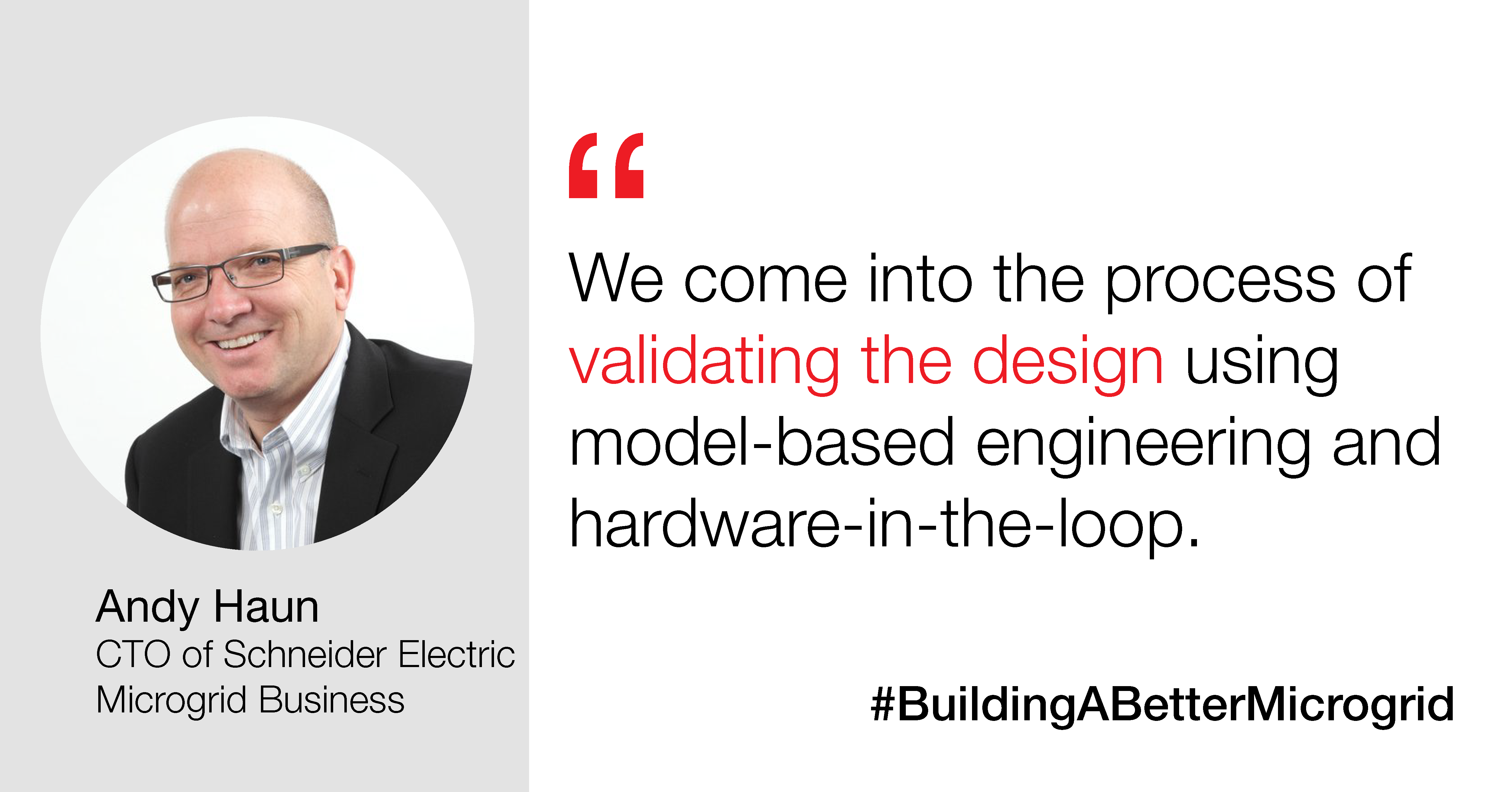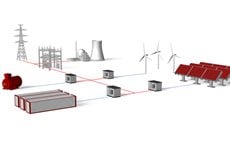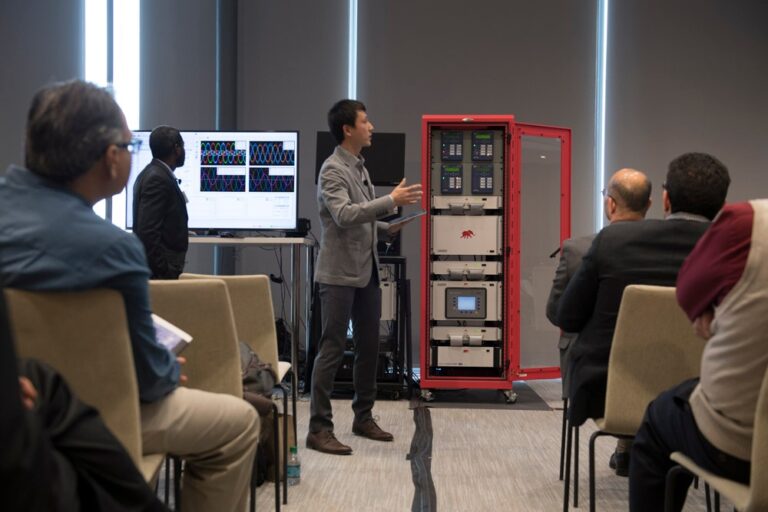Introduction
This article is the third in a series from the Microgrid Conference Panel 2019 – Making Sure Your Microgrid Will Work: Risk Reduction with Controller Hardware In the Loop (C-HIL) and Model-based Engineering.
Andy Haun, CTO of Schneider Electric’s microgrid business, was one of the panelists at the Microgrid Conference 2019. He has led many key product development and technical innovations at Schneider Electric to simplify and enable effective grid-edge solutions including battery-based energy storage with highly efficient inverters for distributed energy resources.
Andy talked about how Schneider Electric used model-based system engineering and microgrid Hardware-in-the-Loop testing for designing and testing power systems controls.
Major Challenges to Designing and Testing Microgrids
Since a system must be reliable, all possible problems need to be identified and solved before implementation and commissioning. Developing successful troubleshooting methods for unexpected scenarios is also necessary.
Haun notes some major challenges that system integrators face when designing and testing power systems:
Challenge #1 | Costly Power Lab Testing
Testing in a physical lab for all the various operational scenarios and system faults is very expensive and time-consuming. High-power converters in a complex microgrid system require costly high-power lab infrastructure. It is also difficult to replicate all operational scenarios in a power lab setting due to safety concerns and the risk of damaging the power system.
It’s hard to create all kinds of different power quality issues in an electrical system.
Challenge #2 | Control Interoperability
A microgrid’s control schema must enable a smooth transition from grid-tied operation to islanded mode (e.g. inverters + backup generator sources).
There are complex interactions among various distributed energy resources (DERs) – energy storage, backup generation, variable loads, and inverters for solar, wind, and battery systems – that require sophisticated controls and communication systems.
It’s part of the microgrid’s control schema to be able to reliably go from a grid-connected environment to an inverter-based coordination system.
Challenge #3 | Realistic Models
Haun mentioned the importance of realistic models in determining the outcome of Schneider Electric’s hybrid DC microgrid solutions. Without high-fidelity models, they could not demonstrate some of the difficulties experienced in their products during simulation.
The DC output characteristics or the response of the model characteristics are going to be dependent on how well you model it.
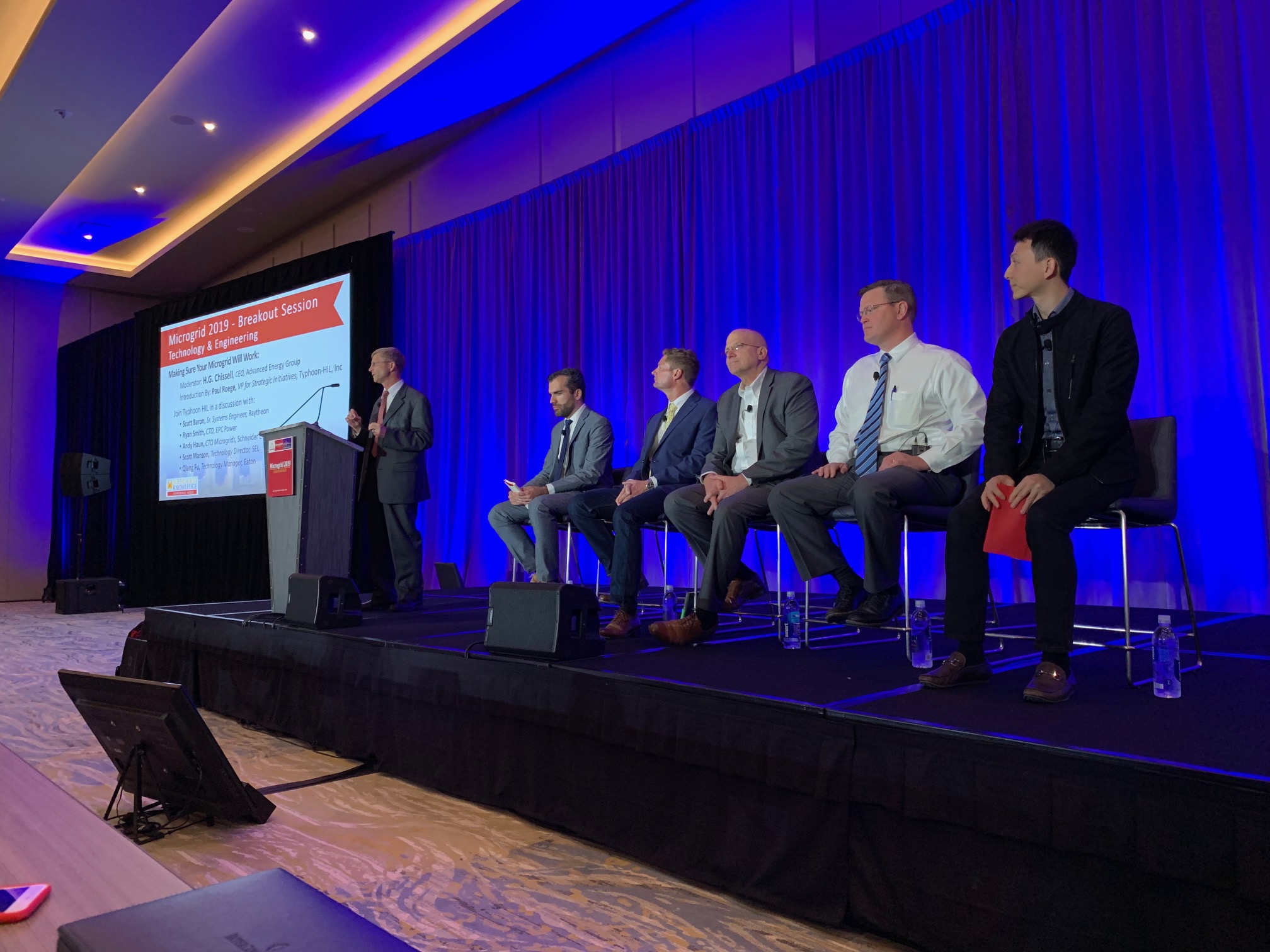
Two Approaches to Model-Based Engineering and HIL
Haun specified two approaches to model-based engineering: initial design and design validation.
Solution #1 | Initial Design
Using their microgrid design tools (Typhoon HIL and other simulation providers), Schneider Electric can gather financial data from this initial model-based approach. Initial models can also gather data on the behavior of DERs and loads.
After the initial design phase, there’s the design validation using controller hardware-in-the-loop (C-HIL) technology to create a microgrid testbed.
Solution #2 | Design Validation
This is where HIL comes in.
We come into the process of validating that design using hardware-in-the-loop or model-based system engineering.
C-HIL builds on model-based engineering. It’s a technique that is used to develop and test embedded control systems using a real-time simulation. The microgrid power stage is simulated in the HIL and interfaced with actual hardware including protection relays, microgrid controllers, and controllers of solar inverters, battery inverters, diesel gensets, and other DERs.
With real controllers in the HIL system, C-HIL allows for high-fidelity models that accurately represent field scenarios. It allows testing and designing microgrid controller software before field deployment, and after deployment when upgrading controls firmware.
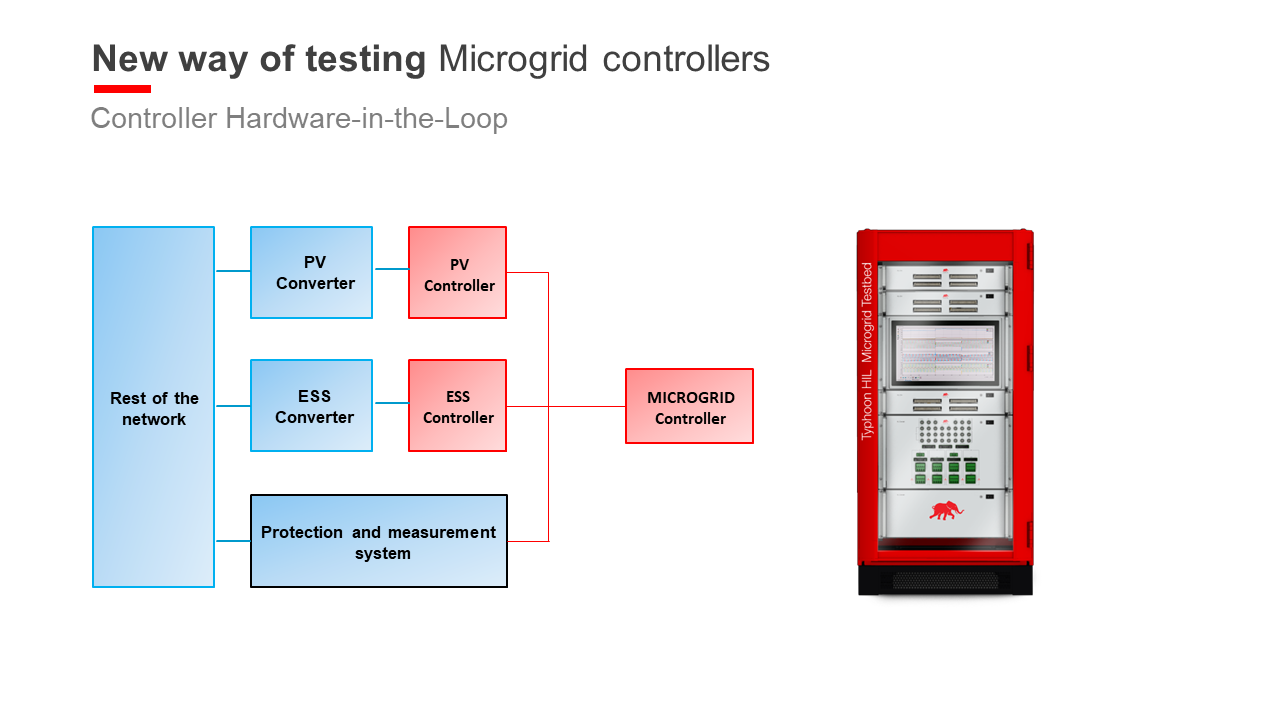
The Benefits of Microgrid Hardware-in-the-Loop Testing
Haun has pointed out the major benefits of model-based system engineering and a microgrid Hardware-in-the-Loop simulation testbed.
Benefit #1 | Manage Control Complexity and Interoperability
Most microgrid projects today require system integrators to coordinate old and new assets in a microgrid. As smart inverters and cyber-physical components grow more complex, these assets require sophisticated controls to manage control complexity and interoperability.
Using C-HIL testing early in the design process and throughout the lifecycle shows a 38% reduction in the number of software bugs and a 60% cost reduction in fixing bugs according to VDC Research.
Benefit #2 | High-Fidelity Models
Haun mentioned the need for high-fidelity models that can accurately replicate various operational conditions and allow his team to showcase their product solutions.
We’ve used hardware-in-the-loop solutions in order to replicate a variety of situations that we can then show how our products solves.
C-HIL enables Haun’s team to create high-fidelity models through real-time simulation of a microgrid power stage interfaced with real microgrid controllers, protection relays, and DER inverter controls.
Benefit #3 | More Test Coverage
Integrators are not limited by power and space in a physical lab. This allows for greater test coverage of customizable models in which to test system components resulting in more accurate output.
These changes can be safely modeled and observed in real-time simulation before control integration to the power system. The model-based environment is especially important in testing system transition due to the risk of shutting down mid-switch from grid to inverter.
Benefit #4 | Reduced Time to Market
Since simulations can provide constructive feedback faster than traditional lab testing, new features and functionalities can be introduced much more rapidly.
Moreover, relying on flexible and high-fidelity digital testing of the system reduces necessary man hours by 20-30% on average, according to Qiang Fu, regional technology manager at Eaton.
Benefit #5 | Life-cycle Maintenance
A microgrid’s operation and maintenance requirements change over time, as the system is continually upgraded.
Through HIL and C-HIL, a digital twin is used to test upgrades before deployment, test for interoperability issues, and troubleshoot and optimize solutions without risking equipment damage or operation disruption onsite.
So you’re running both the hardware and software digital twin of the environment online for testing purposes.
Systems can be tested via digital twin for the risk of tripping devices, going offline, or shutting down in transition.

Final Takeaway | One Tool from Design to Commissioning
System integrators face several challenges when designing and testing power system controls. These challenges include costly power lab testing, control interoperability, and model fidelity that can accurately recreate system faults and power quality issues. Moreover, accurate analysis of costs and ROI also pose hurdles for microgrid project design and commissioning.
Schneider Electric overcomes these challenges by relying on model-based engineering and microgrid controller hardware-in-the-loop testing. The main benefits of this approach are faster innovation, guaranteed control interoperability, reduced man hours, reduced time to market, and greater test coverage.
System integrators can use a microgrid hardware-in-the-loop testbed throughout the entire microgrid project lifecycle from design to post-commissioning. This enables them to build a much better microgrid.
Credits
Author | Samantha Bruce
Visuals | Typhoon HIL
Editor | Debora Santo
